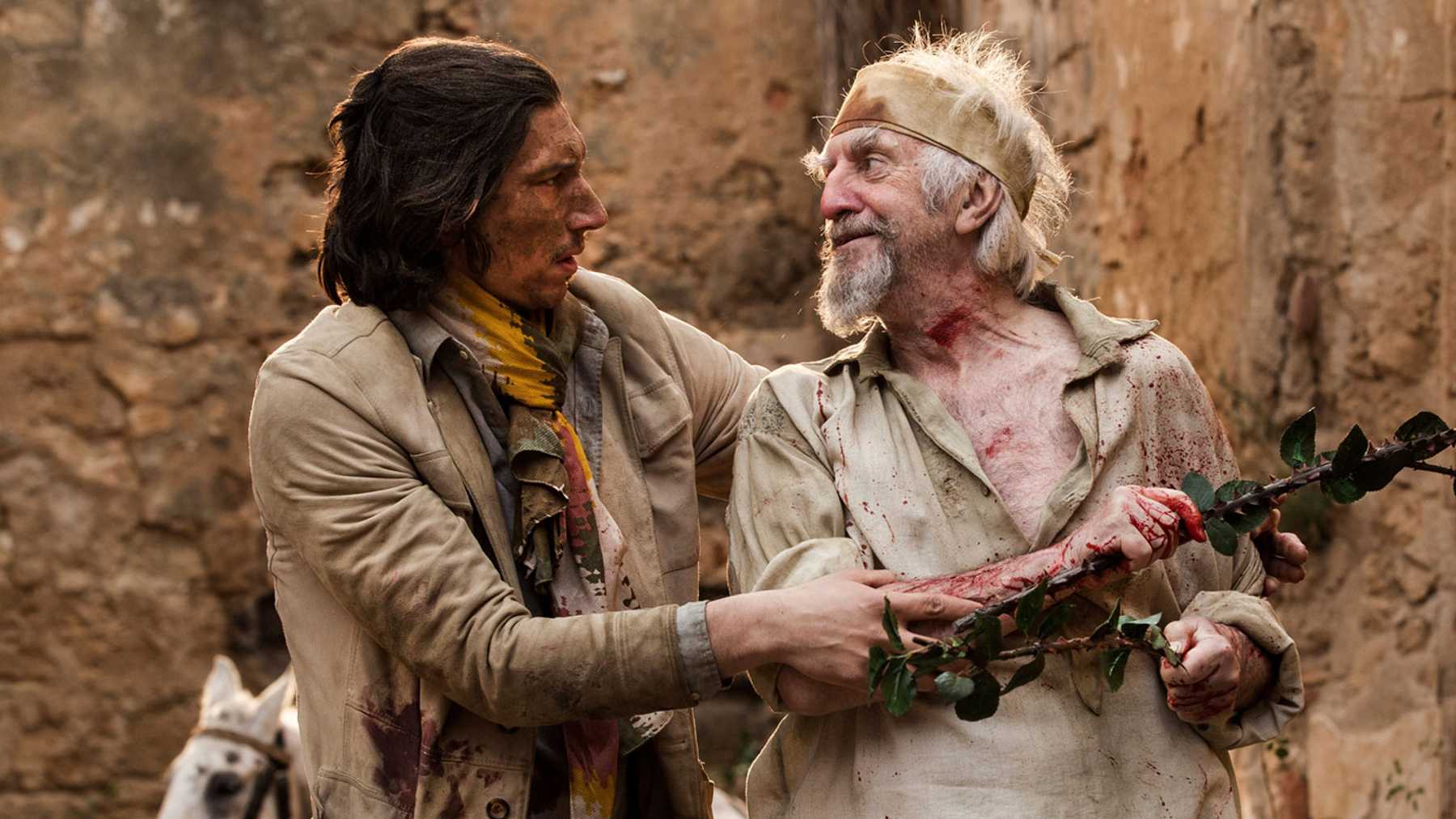If there was one single theme that runs through the many and varied works of Terry Gilliam, it has to be that of a lone dreamer, fighting against the sad mundanity of the world. With that in mind, it’s hardly surprising that his longest-serving passion project is an adaptation of Cervantes’ The Ingenious Gentleman Don Quixote of La Mancha. This is the sad tale of a bewildered, ageing Spanish nobleman, who passes himself off as a knight and attempts to enact chivalrous deeds, much to the chagrin of his long-suffering squire and neighbour, Sancho.
Of course, Gilliam is never straightforward, so here Sancho is re-imagined as Toby (Adam Driver). a modern-day TV ad director. Whilst bored during the filming of a Don Quixote-themed commercial, he stumbles upon the village where a decade earlier, he shot his final year project; an art-house adaptation of Don Quixote, starring the local bootmaker (Jonathan Pryce) in the titular role. The trouble is, the old bootmaker has become convinced he really is Quixote; Toby now finds himself caught up in the man’s madcap adventures in increasingly bizarre and dreamlike situations.
As the film proudly states during the opening credits, The Man Who Killed Don Quixote is a film 25 years in the making. It’s almost impossible to talk about the project without mentioning the several abortive attempts Gilliam has made in trying to bring this story to the screen – the most successful of which being the infamous disaster of a production in the year 2000, when production was shut down after only six days of principal photography. This early version, as chronicled in the excellent documentary Lost in La Mancha, was to star Johnny Depp and legendary French actor Jean Rochefort as Quixote, and would tell vaguely the same story as the now-completed version.
It’s interesting that there are clear shades of that older vision in the completed 2020 production. Although Rochefort sadly passed away in 2017, and Depp became too old to play Toby (and was also unavailable to even cameo in the latest film), their shadows loom over the film in both some of the choices Driver and Pryce make, as well as in smaller matters of production design, such as Óscar Jaenada‘s Gypsy character, who is partly styled on the character design previously given to Depp.
But the more fascinating meta part of the film’s lineage and history is how it has reshaped the story. Originally a far more Time Bandits-like affair about Toby being literally tossed back in time to meet Quixote, this final film instead feels like Gilliam’s own treatise on the importance of dreams over the sad stale bureaucracy of Hollywood. While the narrative is very much a retelling of the classic story, the film sets its sights endlessly on the vapid and offhandedly callous actions of producers, financiers, and close-minded crew-members.
The brilliance of The Man Who Killed Don Quixote is that it feels like the culmination of all of Gilliam’s genius, as a third chapter to those started with Time Bandits and The Adventures of Baron Münchhausen. Ultimately, the three films are about the powerful magic of believing in your own dreams against all odds. It’s also the most polished of this style, with easily some of the best performances Gilliam has pulled from his actors in a long time. It’s a fitting crown to place upon a dream that took a quarter of a century to achieve.
